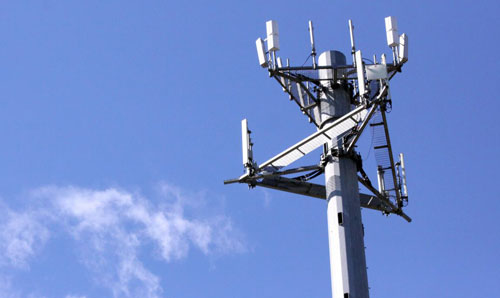
Imagine yourself with a thousand small crates that must be moved from A to B along roadways. Inside each is part of an intricate construction that cannot be complete until every piece has arrived. You have options. One is an oversized lorry that may pass only along the largest motorways, but can carry all the boxes at once. An alternative is to hire a thousand couriers, each strapping one package on the back of a motorbike, and taking a different route to get to B travelling as zippily as possible. If a courier fails in his mission — perhaps due to a tree across the road or a traffic jam — he calls back to dispatch, which puts a replacement part on another driver’s bike and sends him on his way.
Which approach is most likely to deliver sooner? In the best case, with little traffic or hold-ups, the big lorry may be the more efficient choice. But it is likely to suffer too many slowdowns and setbacks to achieve a consistently high speed, its far greater capacity notwithstandng. On average, then, the thousand couriers (including their substitutes) are a better bet, even though in the real world few people would want to co-ordinate such an effort.
Replace courier with data packets, though, and it is commonplace. In communications, the technique is known as orthogonal frequency division multiplexing, or OFDM. Don’t let the monstrous moniker put you off. OFDM is much in the news, albeit implicitly, and underlies much of the data sent and received by people the world over. Its origins date to the 1870s, with experiments by Alexander Graham Bell and competitors (dropped in favour of a switch to voice) on “harmonic” and “multitone” telegraphy. And the technology drives all current flavours of Wi-Fi, and is a fundamental part of WiMax and the fourth-generation (4G) mobile technology LTE (long-term evolution). It is also used in DSL and cable modems in a similar form, and for broadcasting DAB in Britain and HD Radio in America.
Classically — that is, before the late 1990s — encoding data onto a wire or a radio broadcast involved the equivalent of a big lorry. A transmitter used the entire allocated range of frequencies for a channel to send a wide chunk of data. Techniques allow sending many bits at the same time, by placing them as different tones along the available frequencies, like notes on a musical scale. Error correction, through redundancy and other tricks, copes with a certain amount of errant static over a phone line or interference in a radio transmission.
But this wide-channel approach falls apart at extremely high data rates, as it requires near-perfect transmission conditions to achieve consistent performance. The smallest obstruction on the roadway (like persistent interference between channels, known as crosstalk, along just a small set of the available frequencies) requires the paired set of communications devices to talk at ever slower rates, until a speed is achieved where the signal and noise can be told apart. This is inefficient.
With OFDM, a channel that might be as narrow as 5MHz (used with 3G HSPA on GSM networks) or as broad as 160MHz (available with 4G LTE and Wi-Fi’s upcoming 802.11ac flavour) is divided into numerous subchannels. Each subchannel sends a proportionate fraction of the data. Should one subchannel be blocked by a temporary spate of noise, all the others continue on their way. In wired communications, this can be crosstalk in bundles of copper wiring, or even harmonics from terrestrial radio stations.
Think of a swimming pool divided into lanes. With no lanes you get the classical transmission model: all are free to get to the other end. Divided up into lanes, swimmers remain more orderly and bump into each other less often. OFDM offers a statistical probability of greater aggregated throughput — more data passing faster — than a single wide channel.
Each swimmer, to stretch the metaphor, is free to swim as fast as he likes, too, using whatever stroke. The same is true in OFDM: every subchannel can transmit at different rates independent of the others, depending on the quality of the particular wire or spectrum. Even better for wireless the signal from each subchannel may reflect off different objects in an obstructed environment (a so-called multi-path signal), and be reconstructed separately.
(Multiple-in, multiple-out or Mimo antenna arrays help achieve that.) Such reconstruction is almost impossible with a single wide-band signal.
The orthogonal part of OFDM is unique to wireless. Signals in adjacent channels are timed so that their oscillating waves carry information at different intervals relative to each other. That prevents constructive interference among subchannels, like when two swimmers performing breaststroke in narrowly adjacent lanes might smack each other when their arms come up. Offset the swimmers by a couple of feet, and they never touch.
OFDM took off in 1990s, when digital signal processors (DSPs) — the kit that turns analogue signals into digital and the other way round — became cheap enough to stick piles of them in affordable broadband modems. The Internet’s opening for personal and commercial use in 1994, coupled with telecoms wanting a piece of the action, dovetailed neatly with the rise of cheap DSPs, which made ADSL broadband modems possible. Had Bell stuck with multi-tone technology, broadband might have made its mark a century before it actually did. — (c) 2012 The Economist![]()
- Subscribe to our free daily newsletter
- Follow us on Twitter or on Google+ or on Facebook
- Visit our sister website, SportsCentral (still in beta)




